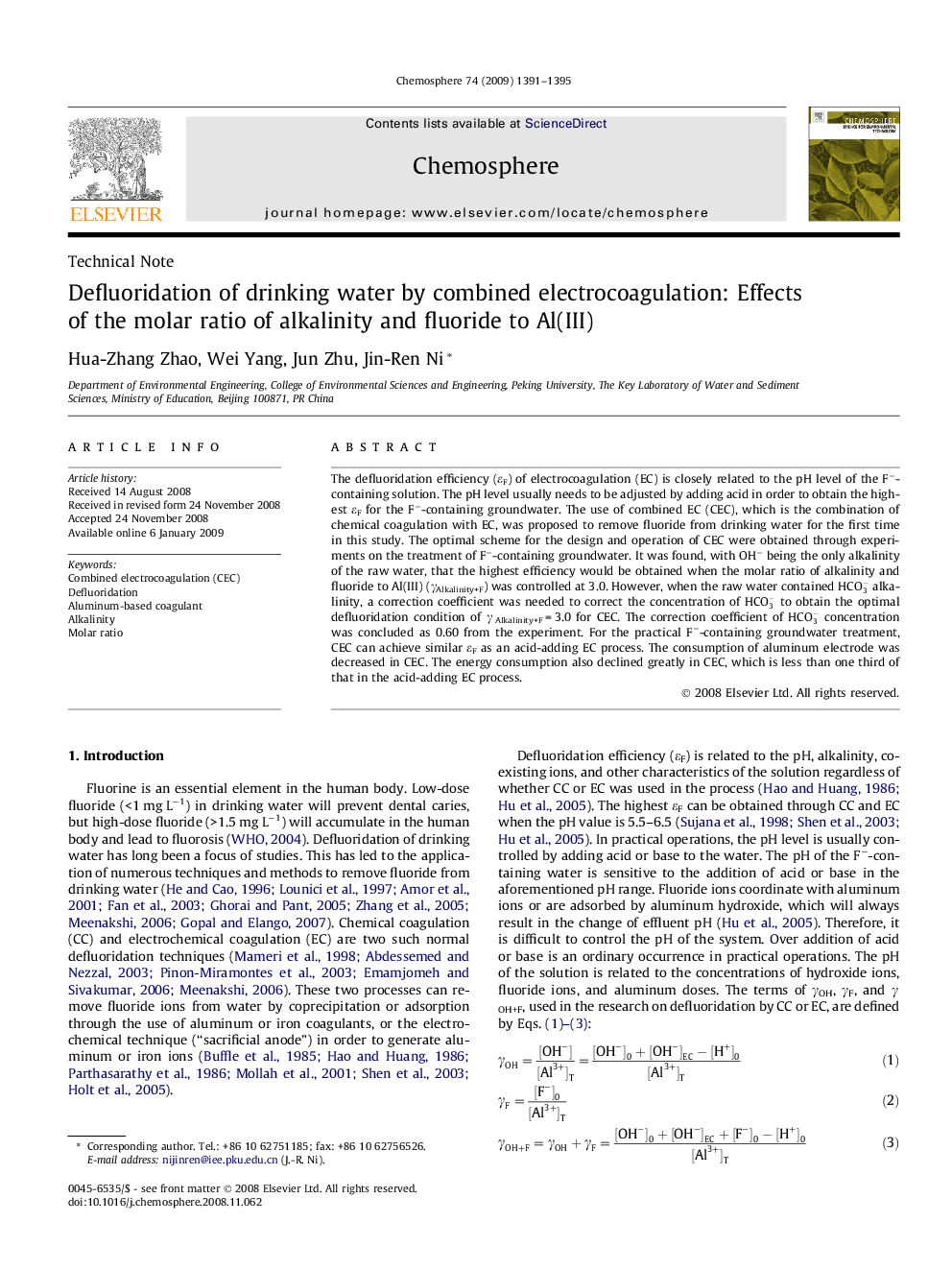| کد مقاله | کد نشریه | سال انتشار | مقاله انگلیسی | نسخه تمام متن |
|---|---|---|---|---|
| 4413199 | 1307668 | 2009 | 5 صفحه PDF | دانلود رایگان |

The defluoridation efficiency (εF) of electrocoagulation (EC) is closely related to the pH level of the F−-containing solution. The pH level usually needs to be adjusted by adding acid in order to obtain the highest εF for the F−-containing groundwater. The use of combined EC (CEC), which is the combination of chemical coagulation with EC, was proposed to remove fluoride from drinking water for the first time in this study. The optimal scheme for the design and operation of CEC were obtained through experiments on the treatment of F−-containing groundwater. It was found, with OH− being the only alkalinity of the raw water, that the highest efficiency would be obtained when the molar ratio of alkalinity and fluoride to Al(III) (γAlkalinity+F) was controlled at 3.0. However, when the raw water contained HCO3- alkalinity, a correction coefficient was needed to correct the concentration of HCO3- to obtain the optimal defluoridation condition of γAlkalinity+F = 3.0 for CEC. The correction coefficient of HCO3- concentration was concluded as 0.60 from the experiment. For the practical F−-containing groundwater treatment, CEC can achieve similar εF as an acid-adding EC process. The consumption of aluminum electrode was decreased in CEC. The energy consumption also declined greatly in CEC, which is less than one third of that in the acid-adding EC process.
Journal: Chemosphere - Volume 74, Issue 10, March 2009, Pages 1391–1395